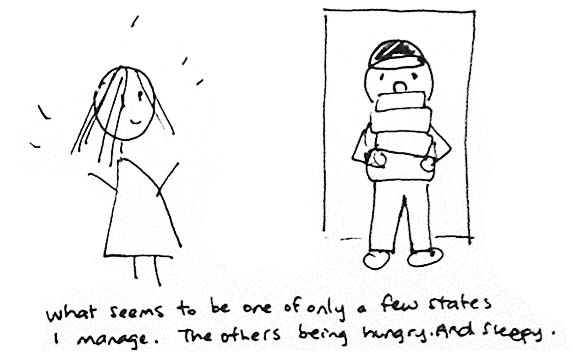Lately I’ve been obsessing.
Very specifically, I’ve been obsessing about getting into the Amazon Vine program — something I had access to once upon a time. It’s a program where you get access to advance reviewer copies of books and things like that. And I want back in.
🙂
Trouble is, it’s an invitation only program.
Which means I need to get on their radar.
So I’ve been writing reviews furiously on Amazon all the while trying to garner as many helpful votes on said reviews as possible before just straight up going to email customer support to plead my case. :p

So I’ve clearly identified myself as that kind of person.
You know, the person who actually collected enough points to try to redeem that Pepsi fighter jet?
Or all those people who make it on Yelp Elite every year?
Ok not really, but how can you develop a program to attract those types of people? What kinds of rewards can you offer to get people to do things?
Extrinsic motivational programs are a tricky beast. It needs to be compelling enough that your users will perform a task, but not sooo compelling that you attract the wrong audience or actually damage your user experience because the rewards become the focus. At the very least, other checks and balances may need to be put in place to ensure that the quality is high enough.
Here are some tips to creating an effective reward program:
Find something people already want to do
A rewards programs is going to be more effective if structured around people’s current behaviors. For example, many people already want to become/stay fit, and therefore spend time running and working out. Fitocracy has created a fitness motivation program where you gain levels and complete quests by completing fitness related tasks and goals. The act of getting achievements, badges and levelling acts as a substantial incentive even above internal motivation. One study suggested that the removal of similar features decreased activity by 50%.
Make it public
Users like getting recognition from others. Making their achievements and status visible to the public (or within a community that they value) gives them added incentive to keep up their activity level.
One example is the Yelp Elite program, where users get a cute Yelp Elite badge, plus their reviews get more visibility. People are proud of their Yelp Elite status and work to maintain it, while the public recognition educates others on the program’s existence and allows others to aspire towards it.
Involve peers
The Yelp Elite program also leverages peers to good effect. The act of trying to become a Yelp Elite member results in frenetic review writing (44% of all reviews were from Yelp Elite members despite Yelp Elites representing under 1% of all Yelp users), but quality is maintained by having other users rate reviews as useful, funny, or cool. As well, Yelp Elite membership is determined by the recommendations of other Elite members to Yelp staffers, so the human review component prevents people from gaming the system to become Elite.
Tiers
Making the rewards appear to be achievable is important. For example, having a reward tier achievable only after staying 50 nights at a hotel chain may cause people to seek out rewards programs with more easily attained tiers.
Adding tiers allows you to expand the top tiers and get more people involved without making them feel that you are diminishing their status. Simply adding people to the “top” tier diminishes how current members perceive their status. This is mitigated by adding tiers beneath them.
Have high value rewards
Rewards or status that can’t be bought are effective in making people feel special. The Amazon Vine and Yelp Elite programs are examples of this. If they gave top reviewers Amazon gift cards instead, there may not be as strong an incentive to review things. Similarly the perks of being a Yelp Elite member (invitations to Yelp community events, increased visibility for your opinions, status within Yelp) cannot be achieved by money.
Yelp experimented with paying users to write reviews in places that Yelp was not well established in, but they found that money didn’t create the right motivation. Paid writers weren’t motivated to create the same quality of reviews and weren’t as connected to Yelp. The Yelp Elite status means more to the power users than a few extra dollars.
Higher values for rewards points tends to increase loyalty and perceptions of the rewards program. For example, giving 1000 points per dollar spent and requiring 100,000 points to get a particular status has better results than giving 1 point per dollar spent and requiring 100 points to get that status. Even though the same amount of spending is required, people perceive that they are getting more and making faster progress with a program involving larger numbers.
A good reward program can really enhance the experience for your avid users and help recruit new ones, but a great one takes fine-tuning, and definitely at a base level needs to tap into something users already want to do. If it’s something too artificial, the reward becomes the focus and quality suffers.
Good thing I like babbling. Back to review-writing for me!

